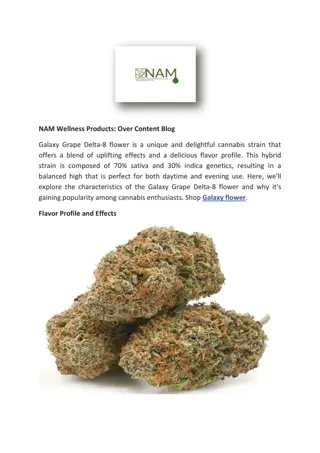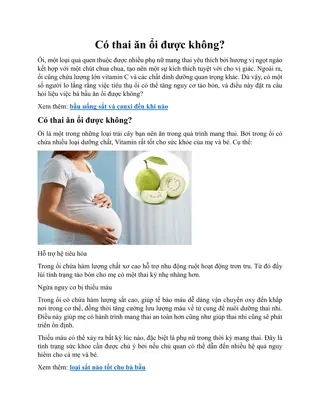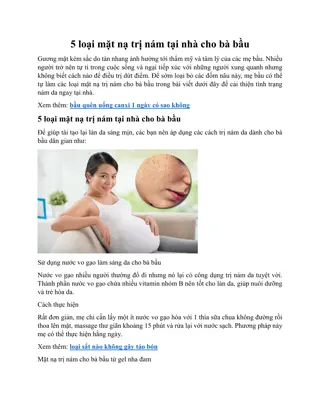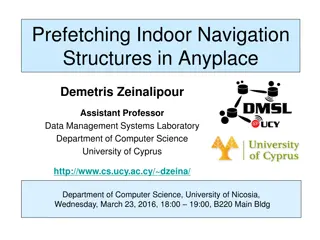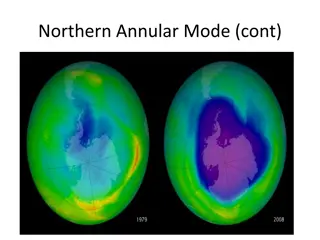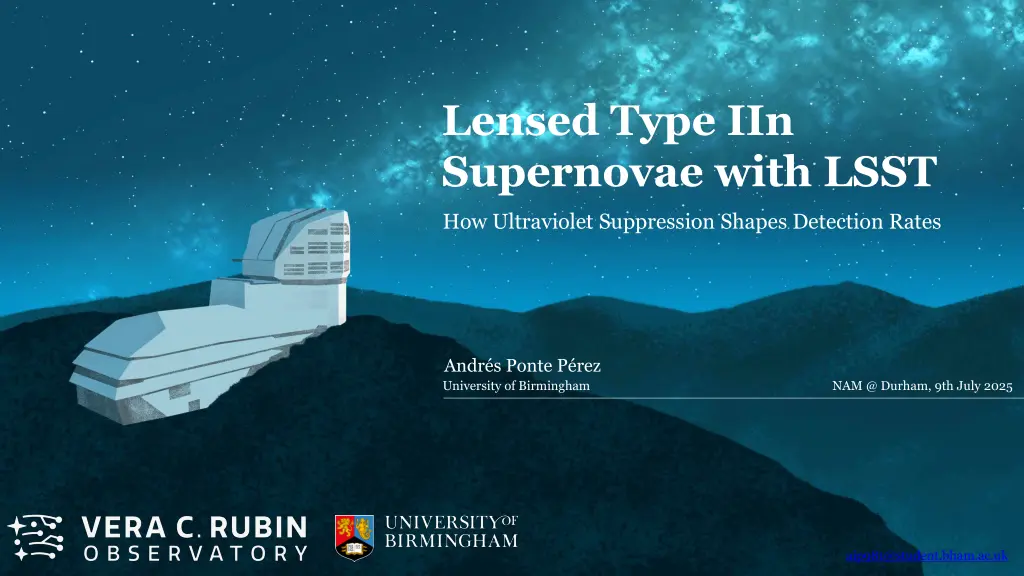
Unveiling the Fascinating World of Type IIn Supernovae
Explore the intriguing nature of Type IIn supernovae and their significance in astrophysics. Delve into aspects such as strong lensing, detection rates, and the scientific case behind these spectacular cosmic events. Discover why these supernovae, characterized by narrow hydrogen lines, are of particular interest to researchers.
Download Presentation

Please find below an Image/Link to download the presentation.
The content on the website is provided AS IS for your information and personal use only. It may not be sold, licensed, or shared on other websites without obtaining consent from the author. If you encounter any issues during the download, it is possible that the publisher has removed the file from their server.
You are allowed to download the files provided on this website for personal or commercial use, subject to the condition that they are used lawfully. All files are the property of their respective owners.
The content on the website is provided AS IS for your information and personal use only. It may not be sold, licensed, or shared on other websites without obtaining consent from the author.
E N D
Presentation Transcript
Lensed Type IIn Supernovae with LSST How Ultraviolet Suppression Shapes Detection Rates Andr s Ponte P rez University of Birmingham NAM @ Durham, 9th July 2025 aip981@student.bham.ac.uk
1. Multiple images 2. Magnified images 3. Time delay between images 1 Andr s Ponte P rez aip981@student.bham.ac.uk
Vera C. Rubin Observatory Andr s Ponte P rez aip981@student.bham.ac.uk
The Legacy Survey of Space and Time (LSST) 10 year survey commencing this year (2025). Will take multi-band ugrizy images of ~20 000 deg2 of the sky. All sky cadence of 2-3 days. Limiting magnitude of 24. WIDE FAST DEEP 2 Andr s Ponte P rez aip981@student.bham.ac.uk
Science Case: Strongly Lensed Supernovae WIDE DEEP Strong lensing is rare, roughly 1/1000 objects are strongly lensed. Supernovae evolve relatively fast around peak brightness. Cosmic supernova rate increases with distance. Probability of lensing increases with distance. FAST DEEP DEEP To date: 8 By 2035 with LSST: 0 1 2 3 5 10 50 100 500 1000+ 3 Andr s Ponte P rez aip981@student.bham.ac.uk
Science Case: Strongly Lensed Supernovae Rate of lensed detections by LSST [yr-1] Supernova Type Goldstein, Nugent and Goobar (2019) Wojtak, Hjorth and Gall (2019) Ia 47.84 89 IIP 88.51 16.3 IIL 12.78 11.9 Ib/c 15.43 15.8 IIn 209.32 210 4 Andr s Ponte P rez aip981@student.bham.ac.uk
What actually are Type IIn Supernovae - and why are they interesting? Andr s Ponte P rez aip981@student.bham.ac.uk
What are type IIn supernovae? Type II because they have hydrogen lines. The 'n' distinction is because these hydrogen lines are narrow. Broad lines Ionised gas Narrow lines Shocked ejecta Broad lines Narrow lines Broad lines Filippenko (1997) 5 Andr s Ponte P rez aip981@student.bham.ac.uk
Why are they interesting? Sometimes when a star dies, the progenitor star becomes violently unstable in the years, decades, or centuries before explosion. Circumstellar material (CSM) interaction is an efficient engine for making bright transients. The CSM interaction may also be highly non-spherical. The CSM properties are a proxy for the stellar structure. Lensed type IIn supernovae allow us to investigate how this evolves with redshift. 6 Andr s Ponte P rez aip981@student.bham.ac.uk
Theres a catch Andr s Ponte P rez aip981@student.bham.ac.uk
Two Problems: 1. Goldstein+ and Wojtak+ did not account for an accurate LSST cadence. 2. Goldstein+ and Wojtak+ both used a standard IIn template (based on SN1999el). This models the IIn spectrum as a pure blackbody. 7 Andr s Ponte P rez aip981@student.bham.ac.uk
The issue of cadence Arendse+ (2024) use the LSST baseline v3.0 cadence and find that only 50% of the type Ia supernovae detected by Wojtak+ are recovered. 8 Andr s Ponte P rez aip981@student.bham.ac.uk
The issue of template Because type IIn supernovae are blue and have significant high redshift detections (z > 2), the ultraviolet (UV) spectrum is relevant. Across almost all supernovae, the UV spectrum falls below the blackbody continuum. This is due to line-blanketing - the absorption of high energy photons by iron-group elements and other metals. Roming+ (2012) 9 Andr s Ponte P rez aip981@student.bham.ac.uk
Simulating a Sample of Lensed IIn Detections Andr s Ponte P rez aip981@student.bham.ac.uk
Cadence We use the v3.4 LSST observing strategy. Consists of two main survey modes, wide-fast-deep (~90%) and deep-drilling fields (DDF). Arendse+ (2024) 10 Andr s Ponte P rez aip981@student.bham.ac.uk
Template ? ? ?0 ??? = ??,?? ?0[ ] Object ? +78 SN2017egm +0.15 2817.5 10 1.95 0.14 +0.40 +453 Gaia16apd 0.51 0.16 3133 549 +0.18 +13 iPTF13ajg 2.86 0.09 2820 10 +0.08 PTF12dam +51 1.78 0.06 2819 17 11 Yan+ (2018) Andr s Ponte P rez aip981@student.bham.ac.uk
Calculation ?? ?? ? ?min ???????phys? ?phys? ????= 0 ?? 0 ????? ?, ????? ?, 12 Andr s Ponte P rez aip981@student.bham.ac.uk
Calculation = the number of type IIn supernovae that happen per year as a function of redshift. ?phys? ?? = the lensing optical depth. The fraction of the the sky in which objects in a given redshift shell are magnified with magnification ?. ???? = the probability that a given lensed supernova is detected by LSST. ? ?, 13 Andr s Ponte P rez aip981@student.bham.ac.uk
Simulation We simulate 200 000 unique lensed type IIn supernovae drawing parameters from the following distributions: ? ? 0,6 ? ? 0,50 ?? ? 19.05,0.5 For a source in our study to be detected, it must have 5 separate observations in any combination of filter. 14 Andr s Ponte P rez aip981@student.bham.ac.uk
Results Andr s Ponte P rez aip981@student.bham.ac.uk
Total yearly detections Reminder: Goldstein+ and Wojtak+ predicted 210 lensed type IIn SNe per year using a pure blackbody. 15 aip981@student.bham.ac.uk Ponte P rez, Smith+ (2025)
Redshift Ponte P rez, Smith+ (2025) Ponte P rez, Smith+ (2025) 16 Andr s Ponte P rez aip981@student.bham.ac.uk
Magnitude Ponte P rez, Smith+ (2025) Ponte P rez, Smith+ (2025) 17 Andr s Ponte P rez aip981@student.bham.ac.uk
What I didnt get the chance to cover Cosmological prospects of lensed Type IIn SNe (e.g utilising multi-source plane lensing). How many of these lensed Type IIn SNe will we get to do interesting science with (spectroscopic gold sample ) How we calculated image separations and time delays for our range of lens models. Identification - how will we know it is a Type IIn and how will we know if it is lensed? Type IIn SN lightcurve heterogeneity. Time evolving CSM interaction (aspherical CSM, winds etc.). 18 Andr s Ponte P rez aip981@student.bham.ac.uk
Key Takeaways and a View on the Future Ultraviolet suppression does not extinguish prospects for lensed type IIn supernovae, even in the most pessimistic model (hooray!). Strongly lensed type IIn supernovae provide a unique laboratory to investigate stellar structure, populations and the terminal stages of giant stars at high redshift. LSST is a one of a kind survey and will offer unprecedented advances in many areas of astrophysics. Paper now on ArXiv! - Please reach out if you want to know more! + huge thanks to my many collaborators and the LSST Strong Lensing Science Collaboration! 19 Andr s Ponte P rez aip981@student.bham.ac.uk
References 1. van Dokkum, P., Brammer, G., Wang, B. et al. A massive compact quiescent galaxy at z = 2 with a complete Einstein ring in JWST imaging. Nat Astron 8, 119 125 (2024). 2. Jha S., Shatz L., 2020, Rings of Relativity, https://esahubble.org/images/potw2050a/ 3. Goldstein D. A., Nugent P. E., Goobar A., 2019, The Astrophysical JournalSupplement Series, 243, 6 4. Wojtak R., Hjorth J., Gall C., 2019, Monthly Notices of the Royal Astronomical Society, 487, 3342 5. Filippenko A., 1997, Annual Review of Astronomy and Astrophysics, 35, 309 6. Arendse N., et al., 2024, Monthly Notices of the Royal Astronomical Society, 531, 3509 7. Roming P. W. A., et al., 2012, The Astrophysical Journal, 751, 92 8. Yan L., Perley D. A., Cia A. D., Quimby R., Lunnan R., Rubin K. H. R., Brown P. J., 2018, The Astrophysical Journal, 858, 91 9. Cold, C. Hjorth, J. 2023, Astronomy and Astrophysics, 670, A48 10.Madau P., Dickinson M., 2014, Annual Review of Astronomy and Astrophysics, 52, 415





